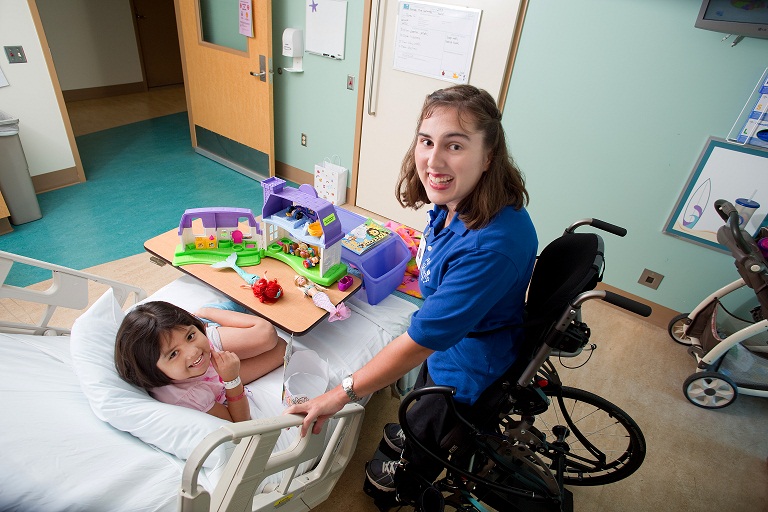Overview

The Southern Family Center for Cerebral Palsy at Rady Children’s Hospital-San Diego, part of the Orthopedic & Scoliosis Center, is one of the nation’s most comprehensive programs dedicated to the care of children and adult patients with cerebral palsy.
During appointments, our multidisciplinary team of pediatric orthopedic surgeons, rehabilitation medicine specialists, physician assistants, nurse practitioners, nurses, occupational, physical and speech therapists, orthotists, social workers and consulting specialists provides a complete evaluation, cerebral palsy diagnosis and treatment/medical care for individuals.
During your cerebral palsy center visit/appointment, you will meet with healthcare professionals/members of the team, who will perform an evaluation and provide a treatment plan.

Alesha doesn’t let cerebral palsy stop her from pursuing her dreams. Meet Alesha.
We offer a full range of services, for children and adult patients with this type of motor disability including a Comprehensive Spasticity Management Program. If you or your child need medical care and surgery from healthcare professionals, Rady Children’s has expert hospitalists, pediatric anesthesiologists, critical care specialists and clinical consultants for patients.
As each individual patient has unique needs based on his or her motor disability/cerebral palsy diagnosis, we are committed to understanding these needs and working with patients and their families to provide the most personalized and advanced care. It is our goal to improve function and quality of life for all of our kid and adult patients.
A Grateful Mother
“My 2-year-old daughter has spastic hemiplegia cerebral palsy. We live on the Central Coast of California in a rural location. We drove over six hours and arrived to an AMAZING team of people who welcomed us in with open arms. We immediately felt like we had joined a club.
In a matter of three hours, everything I had spent a year-and-a-half fighting for where we live was handed to us on a silver platter. Carolina, Dr. Chambers, Dr. Phoebe and the team in the CP clinic SAW our daughter, SAW her needs, SAW how CP affected HER and helped. We left holding back tears of relief. WE LOVE RADY! WE LOVE THE CP CLINIC! I can never say enough good things about them.
Thank you, thank you, thank you Dr. Chambers, Carolina, Dr. Phoebe and your team. We love you and will look forward to seeing you again soon.”
— A very relieved mama, Jennifer Hanna
In the News
New $10M Cerebral Palsy Center Debuts at Rady Children’s Hospital, San Diego Business Journal, features Henry Chambers, M.D.
Support Our Program
For more information about the Southern Family Center for Cerebral Palsy and how to get involved, please contact Julie Reinke, Assistant Vice President, Philanthropy, at 858-966-8303 or jreinke@rchsd.org